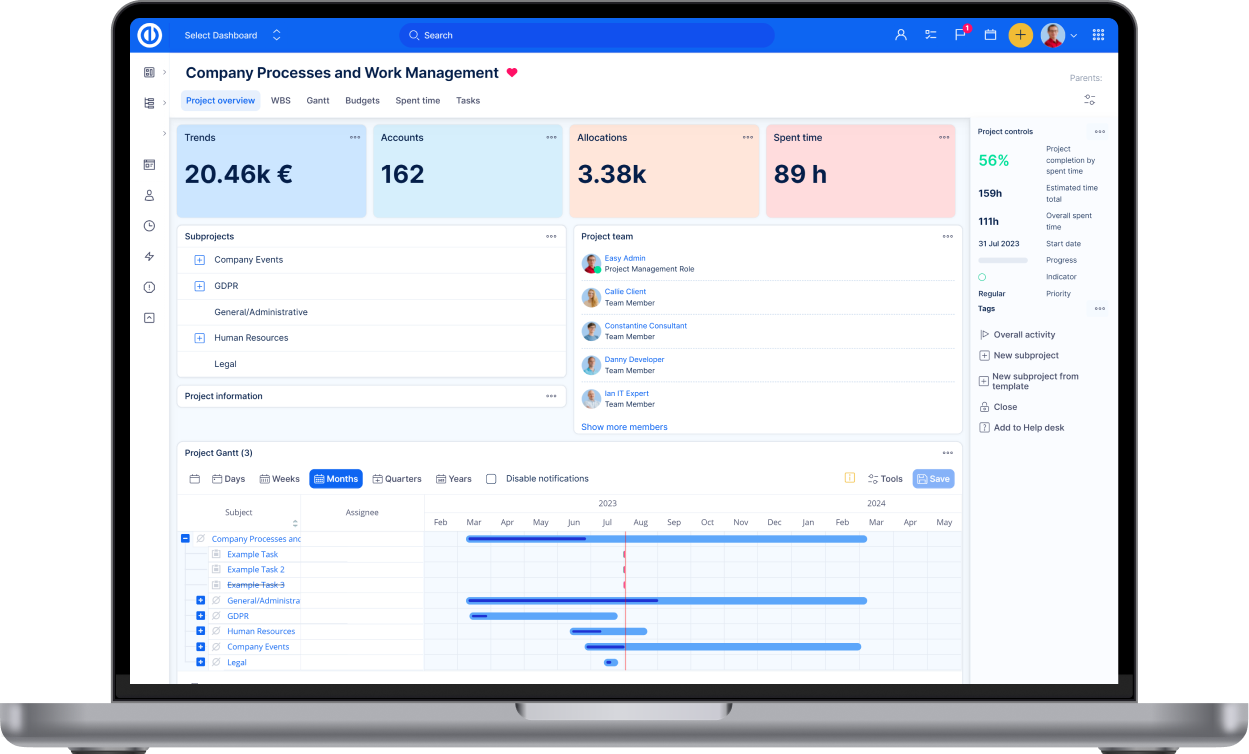
How Growth Made Easy Software Create a Top-Level Agile Resource Management Tool
Easy Software is a global company that offers project management tools like Easy Project and Easy Redmine. Because the traditional resource management system was too detailed for us, we created and implemented our own tool, Agile Resource Management, to prevent conflicts in teams, balance workloads, and plan from a top-level view.
Why we needed a tool?
Before Agile Resource Management, we did not use any tool for resource management. Why? For us, the traditional Resource Management system was too detailed as it works with hours as a measuring unit, and it is meant for detailed management of human resources.
Therefore, in our company, each team managed its workload individually. That worked when there were 50 or 60 of us, but then we started growing. Team numbers of team members increased, the number of external members grew every day, and we realized we were in desperate need of a tool. It was our CEO, Filip Morávek, who identified this internal need and came up with the idea of an Agile Resource Management tool.

The expectations were high
Through the development of the Agile Resource Management tool, Filip, our CEO, was in the role of the Client working tightly with the development team and our Product Owner, Jan Pavera. We knew exactly what we wanted for this tool:
- Resource Management at a Global level
- A crystal clear overview of resource allocation on projects
- One single board for all projects related to product development and product release
- To be used mainly by PMs and team leaders who assign specific tasks to team members
- Team member view
- To offer Road map and Portfolio planning for PMs, PPMs, and PMO
- To be able to see we are working on different projects at the same time (in comparison to RM where you can only see what tasks they are working on)
Ready to meet requirements
In order to create a successful tool not just for internal Easy Software teams, but for any other company, we needed to meet crucial requirements:
- Easy and visual
- Without barriers or requiring permissions
- Focus on scope and time – you have time and scope defined, and you need to do the best you can within the time frame
- Ability to add people to a project based on skills
- Ability to add people to a team or to a project based on seniority level
- Resources unit not only as an individual but also as a team, a Team view showing who is included
- Allocating a project to a team
- Borrowing a person from my team to another project, visualize when one person is working on two projects simultaneously
- Prioritization on PMO, PM, and PPM levels
- Show vacation and sick days connected to our attendance plugin
- Sprint visualization
We did it, we use it, and so can you!
We created a versatile tool for resource management. We use it every day, and now we are ready to show you how it can best help your business. Watch the webinar recording and get all the best tips and tricks for day-to-day use!

Jan Pavera, Product Owner
Implementation, here we come
1. Preparation
This case study is different from the usual ones you may know as it was not just about implementation, but also about new feature development. If you come from a software development company, we don't have to tell you how challenging this can be.
When it comes to testing, clients usually tend to test a new feature or new versions on a testing application that runs in parallel to their regular application. Well, we are a bit different. And so, once we had a beta version ready, we deployed it to our internal Easy Project, known as “Esko”, right away. This happened in May 2022, when our PMO and PMs started using it for daily work. The testing was on!
2. Settings
In the first step, a detailed structure of projects was defined along with all types of filters, views, and metrics. It was also crucial for us to define different types of teams, which is done through Administration > Categories.
One of our needs was to create teams based on team members’ skills and seniority. So, first we defined the skills in Administration > Categories, where we also defined levels of seniority, both showing as skills on the user profile. Thanks to this, we could swiftly create teams with people of various skills and levels of seniority.
This was first done for our scrum team, the “Green team”. Once we were happy with the roll-out, settings, and functionality, it was introduced to other scrum teams as well. Currently, four scrum teams, plus our Product Owner and PMO, use Agile Resource Management actively on a daily basis. Our marketing team joined us as well and effectively uses our tool to plan projects.
And the results?
The implementation of Agile Resource Management brought us:
- Global overview of resource allocation
- Clear overview of allocation conflicts and clashes
- Ability to create teams based on skills and seniority
- Ability to react quickly to lack of resources due to vacations

Our favorite functions of Agile Resource Management
- Skills management – team member allocation to a project based on skills and seniority
- Team creation – team members can be put together into one team where various skills and seniority are combined
- Project allocation to teams – assignment of teams to projects
- Overview of conflicts & parallel work – everyone easily sees conflicts and clashes
- Events – you will always see the most important events, global for all portfolios or per project









